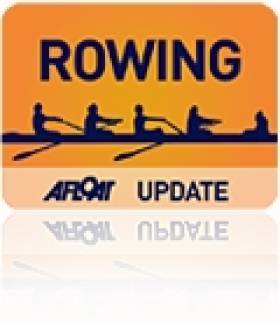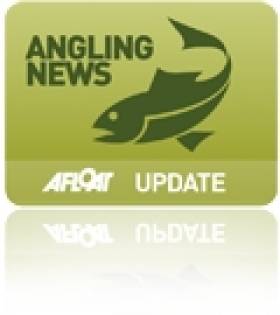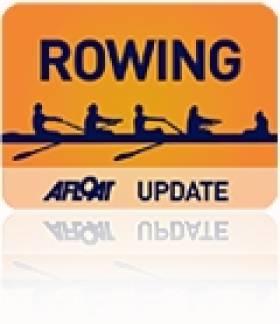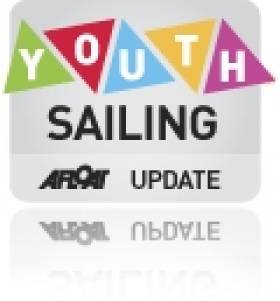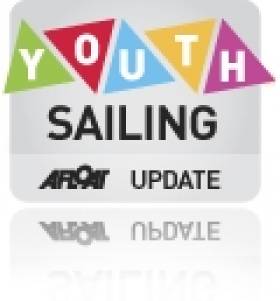Displaying items by tag: Junior
Kids Prove Their Mettle at Junior Pike Angling Nationals
#Angling - It was the girls and little ones who made the biggest mark at the National Junior Pike Angling Competition in Monaghan recently when 14-year-old Ashlyn McCabe and five-year-old Eoin Sheehan were named angler of the year in their respective categories.
Sixty-eight boys and girls from all over Ireland competed for the title in two age categories, under 13s and under 18s at Shantonagh Lough, near Carrickmacross, on Saturday 7 September.
Heavy rain and wind made fishing conditions on the day difficult, but this did not deter the youngsters, all of whom stuck out the tough conditions. A total of 15 pike were caught, ranging in size from 8ozs to 8lbs 15ozs.
In what was a close competition from start to finish, the winners were awarded the National Junior Pike Angling Cup, sponsored by Irish Federation of Pike Anglers, plus a trophy from Wee County Trophies and tackle equipment. All competitors received a medal sponsored by Inland Fisheries Ireland (IFI).
Ashlyn McCabe from the Newry Pike Angling Club topped a highly competitive field to take the under 18 title, also capturing the heaviest bag accolade with an impressive 9lb 15oz catch. Behind her in second place was Luke Everard, while third was Harry McCooey and fourth Sean McCooey.
In the under 13 section, Eoin Sheehan from Dun na Ri Angling Club in Co Meath bested five-year-old Cliodhna McKenna from Keady and District Angling Club.
In the team event, McCabe's club Newry placed first, followed by Keady & District Pike Angling Club and Newgrange Active Angling club. Heaviest fish of all of the qualifiers went to 13-year-old Jamie O’Reilly from Newgrange Active Angling Club, with a pike of 11lb 15oz caught from the Dromore system in Ballybay.
Minister of State Fergus O’Dowd joined IFI chief Dr Ciaran Byrne to present the prizes, trophies and medals on the day. The minister congratulated all the youngsters who took part, stating how delighted he was to see so many young people at the competition from all over Ireland: Tullamore, Newry, Dublin, Longford and Ardee.
He thanked Brendan O’Reilly and the team from the Irish Federation of Pike Anglers who worked tirelessly to organise the event, and all parents and volunteers involved.
The National Junior Pike Angling Competition was sponsored by IFI, the Boyne Angling Centre and the Irish Federation of Pike Anglers, and organised by the Pike Angling Federation.
Shinnick and Jacques Win B Final at World Junior Rowing
#WorldJuniorRowing: Ireland’s campaign at the World Junior Rowing Championships ended on a good note, as Bridget Jacques and Hilary Shinnick won the B Final of the women’s double sculls. The host country, Lithuania led through the 500-metre mark, but Ireland soon took up the lead and, with a very high stroke rate, maintained it to the finish. Lithuania were second and Croatia third.
Jack Casey and Andy Harrington fought hard to win their D Final of the double sculls but had to settle for second (20th overall). Bulgaria led through 500 metres and halfway, but the Ireland crew caught them in the final quarter, only for their rivals to regain the lead with a sprint in the final 150 metres.
The Ireland men’s quadruple finished sixth in their C Final, 18th overall. In a race won well by Romania, with Ukraine a clear second, Ireland stayed in touch with the four chasing boats, disputing fifth with Japan in the final quarter.
World Junior Rowing Championships, Trakai, Lithuania, Day Five (Selected Results, Irish interest)
Men
Quadruple Sculls – C Final (Places 13 to 18): Romania 6:02.52, 2 Ukraine 6:04.50, 3 Belarus 6:06.78, 4 Denmark 6:06.94, 5 Japan 6:08.13, 6 Ireland (C Carmody, J Mitchell, D O’Malley, P Hegarty) 6:09.62.
Double Sculls – D Final (Places 19 to 24): 1 Bulgaria 6:39.15, 2 Ireland (J Casey, A Harrington) 6:40.35, 3 Estonia 6:48.32, 4 Ukraine 6:49.12, 5 Mexico 6:49.48, 6 Croatia 6:52.35.
Women
Double Sculls – B Final (Places 7 to 12): 1 Ireland (H Shinnick, B Jacques) 7:14.52, 2 Lithuania 7:16.60, 3 Croatia 7:18.13, 4 Belarus 7:22.75, 5 Slovenia 7:26.81, 6 Austria 7:30.03.
#Angling - The Galway Independent shines the spotlight on 15-year-old Ciarán Reilly, vice-captain of the cross-border Irish junior angling team headed to Wales nest week for the Home Counties International.
The Loughrea lad has already been selected as captain of next year's under-18 squad, but isn't looking past the stiff competition from across the UK at Llyn Brenig reservoir in North Wales on 7 August.
“I’d be fairly confident with the team this year,” he said with some understatement.
Espersen Sees Galway Rowers Rule at Erne Head
# ROWING: Morten Espersen was an interested spectator for a fine day of rowing at the Erne Head of the River at Enniskillen today. The Ireland HPD saw a composite from Galway come home fastest of a strong field of men’s senior eights. The crews, which featured the experience of Grainne Mhaol along with NUIG and St Joseph’s, had three seconds to spare over UCD. The Dublin college had good reason to be pleased as they started third but were faster than Queen’s, who started ahead of them. Neptune’s junior 18 eight had a good ninth placing.
|



























